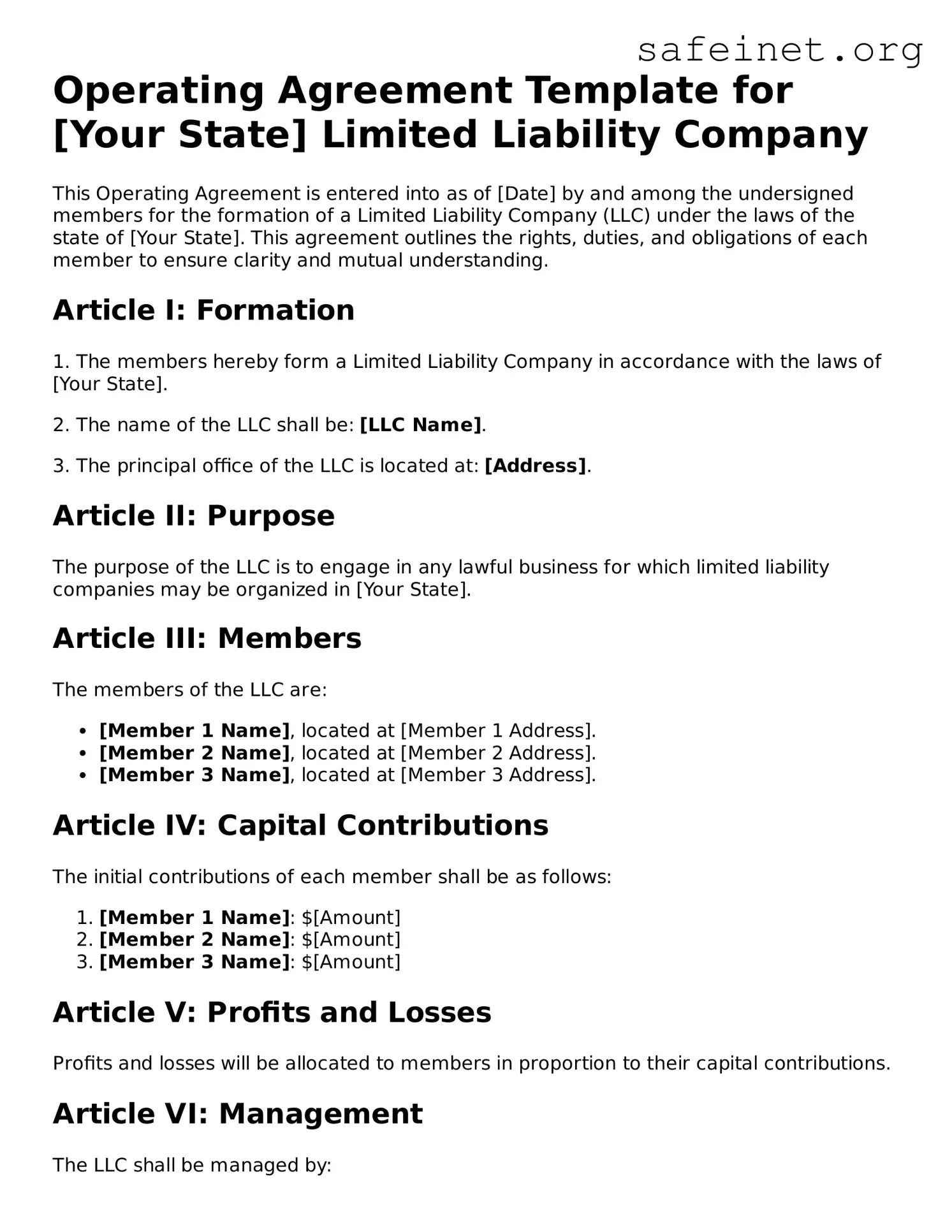Operating Agreement Template for [Your State] Limited Liability Company
This Operating Agreement is entered into as of [Date] by and among the undersigned members for the formation of a Limited Liability Company (LLC) under the laws of the state of [Your State]. This agreement outlines the rights, duties, and obligations of each member to ensure clarity and mutual understanding.
Article I: Formation
1. The members hereby form a Limited Liability Company in accordance with the laws of [Your State].
2. The name of the LLC shall be: [LLC Name].
3. The principal office of the LLC is located at: [Address].
Article II: Purpose
The purpose of the LLC is to engage in any lawful business for which limited liability companies may be organized in [Your State].
Article III: Members
The members of the LLC are:
- [Member 1 Name], located at [Member 1 Address].
- [Member 2 Name], located at [Member 2 Address].
- [Member 3 Name], located at [Member 3 Address].
Article IV: Capital Contributions
The initial contributions of each member shall be as follows:
- [Member 1 Name]: $[Amount]
- [Member 2 Name]: $[Amount]
- [Member 3 Name]: $[Amount]
Article V: Profits and Losses
Profits and losses will be allocated to members in proportion to their capital contributions.
Article VI: Management
The LLC shall be managed by:
- All members, collectively.
- Or by an appointed manager: [Manager Name].
Article VII: Meetings
Meetings of the members shall be held at least once a year. Notice of the meeting shall be provided at least [Number of Days] days in advance.
Article VIII: Amendments
This Operating Agreement may be amended only by a written agreement signed by all members.
Article IX: Governing Law
This agreement shall be governed by and construed in accordance with the laws of [Your State].
Signatures
By signing below, the members agree to the terms outlined in this Operating Agreement.
_____________________________ [Member 1 Name] - Date: _______________
_____________________________ [Member 2 Name] - Date: _______________
_____________________________ [Member 3 Name] - Date: _______________
This template is intended for instructional purposes and should not substitute for professional legal advice.
